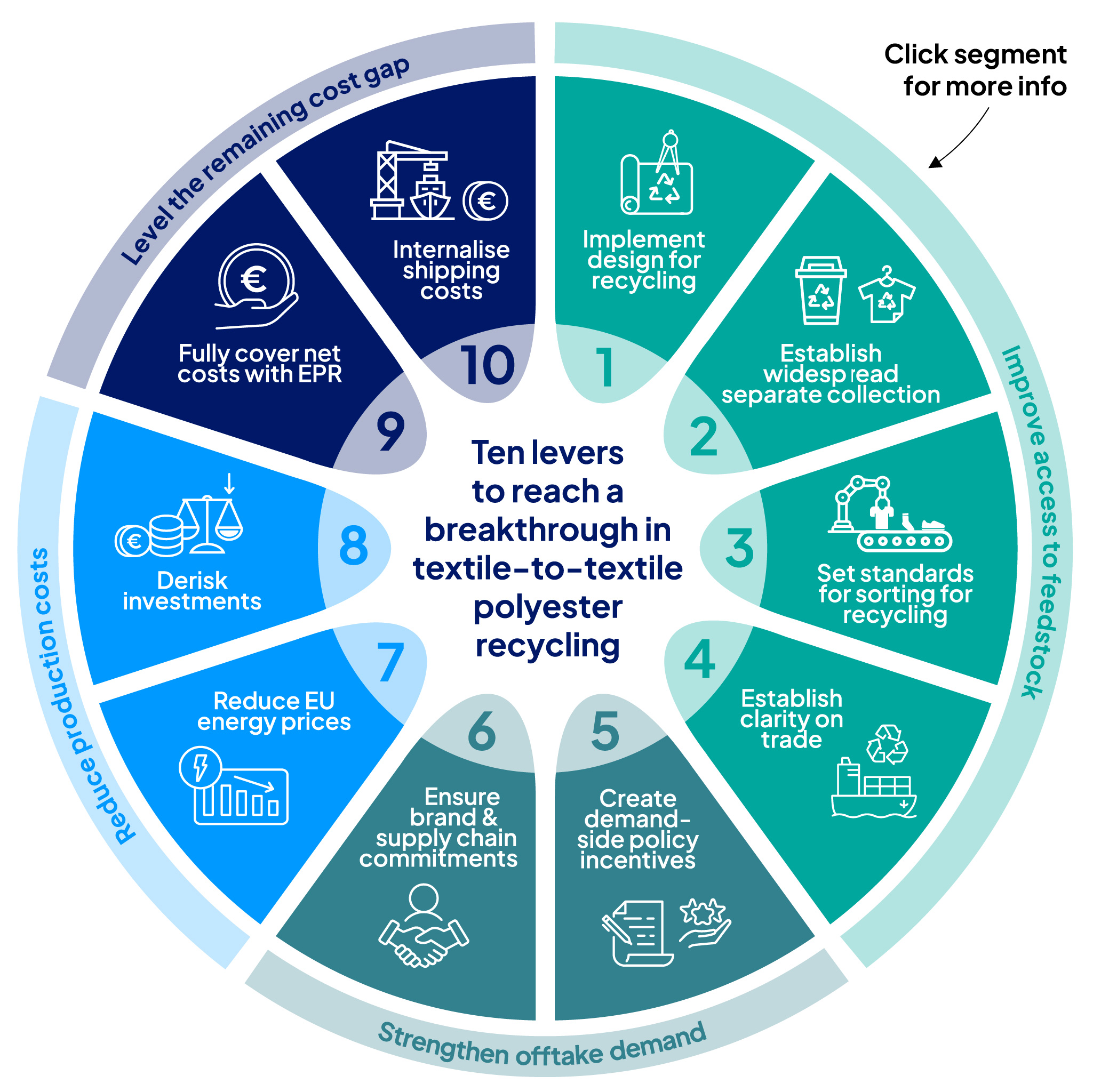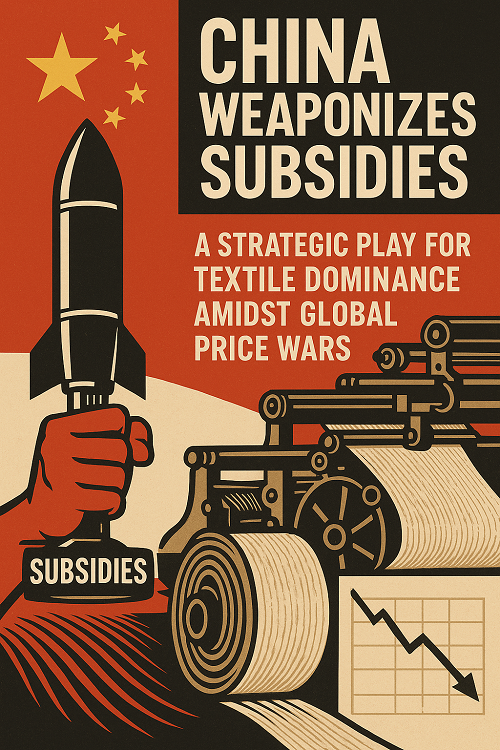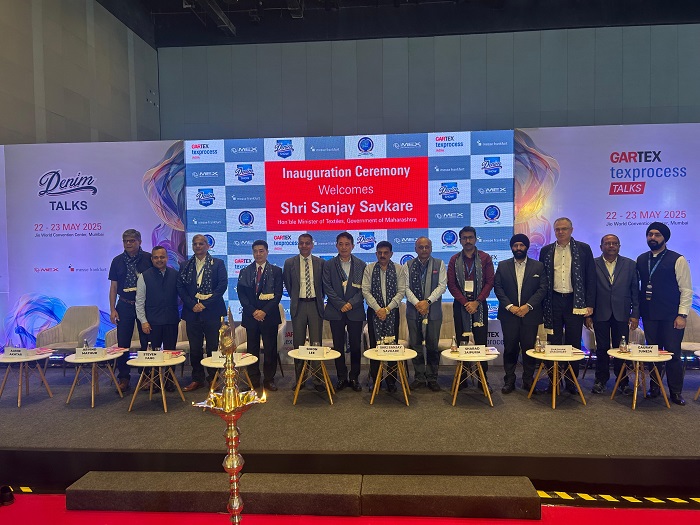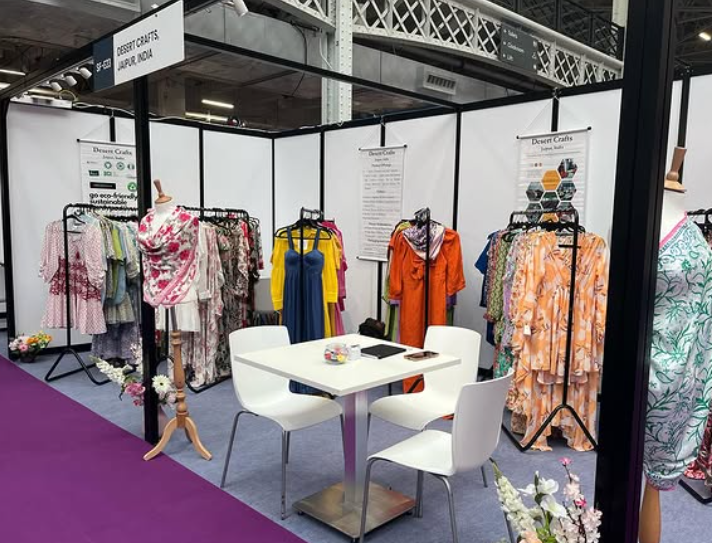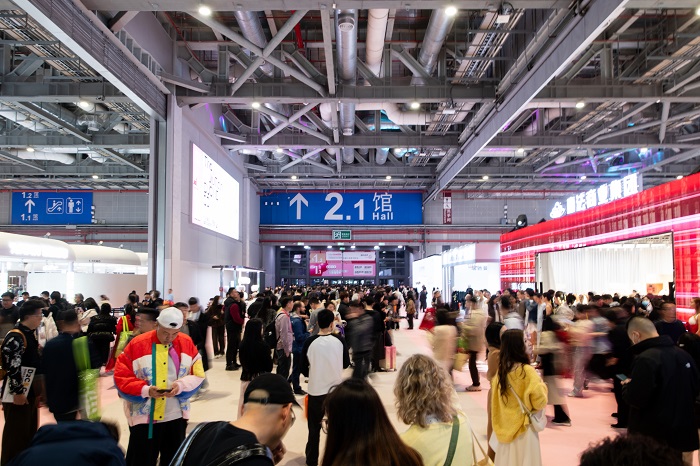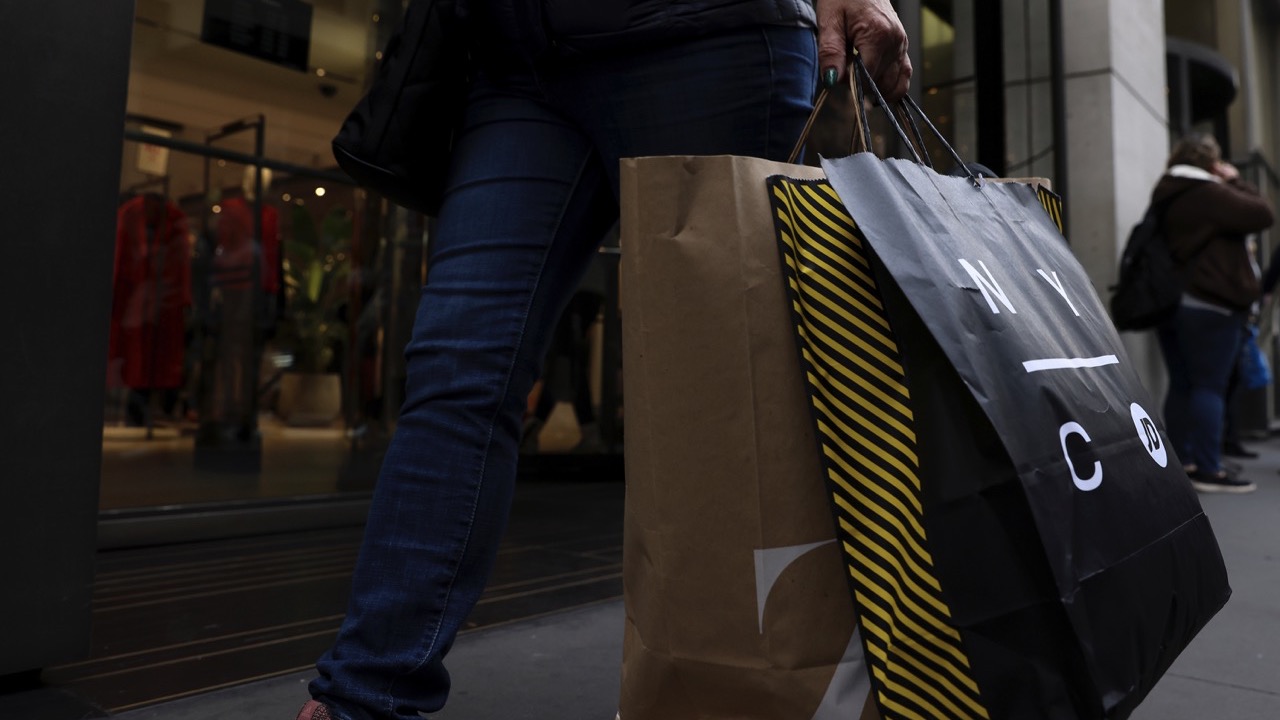FW
Working with schools to design courses which meet the needs of fashion companies has always been at the heart of Lectra’s education program. The company brings together partnership schools and industry experts to discuss how changing professions in fashion are impacting training programs. It organizes competitions with Missoni, Balenciaga, and Armani in Italy as well as Peacebird in China and JC Penney in the United States.
In the United Kingdom, Lectra collaborated with H&M and the Arts University Bournemouth for a competition centred on the design of a collection with zero waste. The process was totally digital, from design to the creation of a virtual prototype in 3D. Students learnt to optimize each stage of the process. The event also threw a spotlight on China and its major role in the evolution of the fashion industry. It brought together major Chinese companies, experts, and representatives from the biggest schools in China.
Exchanges on the impact of the Made in China 2025 plan on the fashion industry were meant to better prepare students for tomorrow’s professions, where digital and automation will occupy a far more central position than today.
Fashion professions are evolving as companies make their first steps towards Industry 4.0, adopting 3D and rationalizing the lifecycle management for their collections.
The global cooling fabrics market is expected to be worth $3.24 billion by 2025. A growing focus on fitness, sports, and leisure activities coupled with increasing health consciousness is likely to propel market growth. The innumerable benefits offered by cooling garments such as moisture wicking, sweat evaporation, breathability, and ventilation have enhanced their use among athletes. Additionally, these fabrics address sustainability issues by saving energy that is required to heat or cool the environment around the wearer.
The sports apparel segment is expected to account for 44.5 per cent of the global market in 2025. Demand can be attributed to heat, moisture, and perspiration resistant, lightweight, smart, and easy to carry wearables, which assist in regulating the wearer’s body temperature in line with the outside temperature. The technological advancements in the product to enhance the performance of garments are likely to fuel its demand in the forecast period.
Demand for cooling fabrics in military and industrial applications is increasing. This is due to their benefits such as temperature regulation, resistance from harmful UV rays and pollutants as well as the protection they provide to the wearer in case of excessive heat exposure. Demand from the healthcare and fashion industries is anticipated to accelerate the market growth.
Bangladesh home textiles which produces high quality textiles for home furnishing, is looking at the EU to increase its market share. Analyst forecast export earnings from the country’s home textile segment would go beyond $1 billion by next year (2018) as the industry is seeing steady growth in international markets over the last couple of years. As per EPB statistics, the country’s home textiles export increased by 6.13 per cent to $799.14 million in the last fiscal year (2016-17). Around 70 per cent of the earnings come from the EU market.
Looking at the European Apparel and Textile Confederation, Euratex data, the EU imported home textiles worth $6.86 billion in 2016, where Bangladesh market share was 7 to 8 per cent. The value of global home textiles stood at $107.4 billion in 2014 and is expected to cross $131.5 billion by 2020. To this end, a group of local entrepreneurs are going to take part in a four-day International trade fair ‘Heimtextil Frankfurt 2018’ at Frankfurt in Germany early in next year. Heimtextil, the biggest international trade fair for home textiles, will be held from January 9, to 12, 2018.
The exhibition will showcase the world’s largest range of textile products. A wide range of products will be on display at the Heimtextil under the division of home textiles and the household textiles product segments, as well as a services segment. A total of 19 Bangladeshi entrepreneurs will take part in the exposition and display their products. Of these 10 will be participating with help from the Export Promotion Bureau (EPB) of Bangladesh.
With official estimates of losses pegged at a whopping Rs 15,000 crore nearly 50 per cent of the cotton crop in the state has come under pest attack. A total of 42 lakh hectares is under cotton and nearly 20.36 lakh hectares spread across 18 districts has been affected with pink bollworm a major cotton pest.
Officials of the state agriculture department say there have been complaints of Bt cotton seeds failing for the last two to three years, the magnitude of the attack and losses are unprecedented for this year. So far around 80,000 farmers had applied for compensation with the agriculture department. But field inspection of only 2,188 farms has been completed.
The cost of insecticides and pesticides, which constitute nearly 40-45 per cent of the total cost of production, was also projected to come down through use of Bt seeds. On the basis of these claims, companies manufacturing the seeds were charging farmers a higher sum. This year 160 lakh packets of Bt seeds each costing Rs 800 were sold bringing in business of Rs 1,280 crore for companies and nearly 96 per cent farmers in the state use Bt seeds.
Chandrakant Patil, Minister for Relief and Rehabilitation says the state cabinet has given permission to conduct inspections of affected area. Compensation will be given to the farmers either through state disaster relief fund or the national disaster relief fund. The first two picks have yielded more cotton than last year. The pest attack has only affected the third picking.
The first edition of the Global Textile Technology & Engineering Show (GTTES 2015) was very well received. Now, bookings are on for the second edition is from December 4, 2017. The next edition is slated to open doors from February 1 to 3, 2019 at the Bombay Exhibition Centre, Goregaon, Mumbai. GTTES 2019 is being supported by the Department of Heavy Industry (DHI), Government of India/Maharashtra and has already received a significant response. A wave of excitement and anticipation from foreign exhibitors and enquiries from overseas delegates are a testimony to the success of the previous edition held in 2015.
The transparent process, focus on providing value for money and quality service in the exhibition has generated exceptional trust and appreciation for India ITME Society as organiser of both GTTES and India ITME series. GTTES 2019 aims to provide a platform to bring together leading strategists, experts, innovators and management developers from Europe, America and the Asia- Pacific region.
GTTES 2019 will offers participants a range of opportunities, from engaging with industry leaders, to showcasing products and services to an international audience. To enhance the effectiveness of the event, participants will be provided numerous opportunities to learn all aspects of latest industry resources and tools from business, governmental and academic.
India ITME Society has hit the right chord with the needs of the textile industry through this exclusive show that will capture the world's attention on strengths and opportunities in global textile industry, with special focus on post spinning segments like weaving, processing, knitting, embroidery, garmenting and more. Participants could enhance their business prospects and trade for textile machinery manufacturers by interacting with agents/dealers from India and across the world.
The Indian denim industry has been operating at 60 per cent to 70 per cent capacity due to a slowdown in demand and over capacity.
If the situation continues there can be more production cuts. Denim needs to be cut, sewn and washed before it can be marketed. These upstream activities are majorly done in the unorganized sectors of Delhi, Ulhasnagar and Bellary. These hubs mainly slowed down due to the liquidity crunch in the economy since demonetization and the slow acceptance of GST by small players. As 85 per cent of the fabric is sold in the domestic market, denim fabric mills are badly hit.
Since the upstream activities of garment sewing and washing will take a while to work smoothly with the formal banking system, no recovery of the market in the near future is foreseen.
The denim fabric manufacturing industry used to be the sunrise industry in the entire textile value chain of India. Over the last decade, it was growing at a healthy rate of 15 percent CAGR. Currently the industry has an annual installed capacity of 1.5 billion meters, which is the world’s largest, after China. The sales turnover of the industry is estimated to be around Rs 15,000 crores. This industry gives direct employment to five lakh workers.
At present there are 46 denim fabric mills operating in the country. The current domestic consumption of Indian denim fabric is 750 to 800 million meters. Denim fabric export is 200 million meters.
A new report has disclosed that the vast majority of the fashion industry has a totally unsustainable business model, as their so-called ‘fast fashion’ labels churn out cheap, disposable fashion, hitting stores as often as twice a week. The report from the Ellen MacArthur Foundation notes, one garbage truck’s worth of textiles is wasted every second, and less than 1 per cent of clothing is recycled into new clothes. $500 billion is wasted every year on clothes that are barely worn and rarely recycled. The report puts forward a vision strategy for a ‘new textiles economy’ in which the lifespan of clothes is longer, they’re produced with fewer chemicals and renting, reselling and reuse become the norm.
In fact six ethical brands now offer an alternative to destructive ‘fast fashion’. Rent Your Wardrobe is a concept where people swap, rent and exchange the things they need and want ― is taking root in the fashion industry, and ‘Rent the Runway’ is a prime example. For $159 a month, the New York-based business lets customers rent four items of clothing at a time. For those with less money to spend, customers can borrow four pieces a month from the business’s 500-label inventory for $89. Jennifer Hyman, the company’s co-founder says they want to put H&M and Zara out of business. The company Rent The Runway is going strong, it managed $100 million in revenue and has raised $190 million in funding.
The Online Marketplace: When children grow out of clothes, toys and accessories companies like Kidizen address this issue through technology. It’s an online marketplace. The site has over 4,00,000 registered users in the US. Similarly Crossroads Trading Co buys, sell and trades second hand clothes. It offers second hand branded clothes at an affordable price.
Ryan Yasin designed Petit Pli, Clothes That Grow With Your Children. The material he developed, inspired by origami, is lightweight, waterproof and can expand in two directions, meaning that each piece can span seven sizes (from six months to three years). Swedish company Houdini Sportswear specializes in organic, chemical-free clothes that can be thrown on the compost heap when they’re beyond repair. More than 90 per cent of Houdini’s range, which is sold in 20 markets globally, is made from recycled, recyclable, renewable or biodegradable fabrics. Then there is Veja’s whose vegan sneakers have been seen on the feet of celebrities. The sneakers are made from sustainable cotton and rubber.
Since 1911, Savio has specialised in yarn-finishing segment, being a leading supplier of winding, twisting and rotor spinning machines, with manufacturing plants across Italy, China, India and the Czech Republic. As a manufacturer of textile machinery, the company offers winding systems that are ideal for many different needs as well as supporting customers in developing new applications to meet their needs.
At ShanghaiTex, the company exhibited their Polar Evolution winding machine — a high performance, energy saving and less labour-intensive product for Chinese customers. The machine on display was a freestanding fully automated one, provided with new features to process bobbins produced by ring frames not equipped with automatic doffing device. "Premium" winder is a solution for processing yarn bobbins whose formation is not originally "favourable" to reach efficiency, for example bobbins with tangles, entanglements and misplaced yarns tail. The newly designed hopper “Pace Sorter Feeder” will optimise the bobbing feeding for a fast and smooth bobbin flow.
In addition, special solutions have been engineered for automatic devices (bobbin preparation, transport, etc.) present in the fully automatic winder models to control and process springy elastic yarns. A special ‘Lycra kit’ is available for yarn end finder station of fully automatic winding machines, to ensure the highest efficiency for the bobbin preparation in the presence of single or dual core yarns. In downstream processing, the unwinding package and the take-up speed facilitate process to be more efficient.
Savio has a full range of grooved drums to cover all yarn types, counts and downstream processes. The EVO drums offer new capabilities to optimise both the unwinding speed of the packages and the package yarn content, through variable number of turns with different winding angles. The package shape is optimised to obtain advantages for a better unwinding ratio in the downstream process, for homogeneous package density and for lower rewinding breaks.
India’s anti-trust regulator has fined Monsanto Rs 15 million for being too slow in replying to questions in a competition probe of the company. The Competition Commission of India (CCI) last year ordered an investigation into whether the US seeds company had abused its position as a key supplier of genetically modified (GM) cotton seeds. The CCI, which is yet to complete its investigation, fined Monsanto for delays in filing a reply.
Monsanto responded to CCI’s queries in August but only after eight reminders issued between April 2016 and May this year, CCIs November order reported, “The commission hopes and trusts that full cooperation shall now be provided.” Monsanto India has said, they continues to extensively cooperate with the CCI in the investigation and have been providing information in response to requests received, This order is related to a procedural matter and is subject to further orders from the Delhi High Court. However, the company challenging the role of CCI and the nature of its probe, Monsanto has filed two separate cases with the Delhi High Court.
Monsanto is up in arms with Indian seed maker, Nuziveedu Seeds, one of the complainants at the CCI. That battle sparked a series of government moves that prompted the world's biggest seed company to withdraw from some businesses in India which has been one of the world's most important seed markets.
In viscose, how the raw material is generated goes a long way in determining its impact on environment. This is as per a recent Life Cycle Assessment (LCA) study completed by SCS Global Services on behalf of Stella McCartney, focusing on the production of viscose fibre. Tobias Schultz, Director of Research and Development at SCS, says apparel companies are interested in identifying environmentally preferable fibres for use but little R&D had been conducted on viscose (also known as rayon).
Manmade cellulosic fibres from different sources may be functionally and chemically identical, but can have radically different environmental profiles based on the processes and technologies used in production, says Schultz. For example, manmade cellulosics from tropical hardwoods originating in Indonesia had significant negative impact associated with deforestation of the rainforest which were completely different from MMCF originating from well-managed forests in Sweden.
MMCF made from Belgian flax or recycled clothing emerged as favourable across a majority of impact categories. Asian production from Canadian boreal forest pulp, Chinese production from Indonesian rainforest pulp, Chinese production from Indonesian plantation pulp, and Indian cotton linter pulped in China had the heaviest environmental footprints among the scenarios examined.
The report was then peer-reviewed by representatives from Price Waterhouse Cooper, the Smithsonian Tropical Research Institute, the Copernicus Institute of Sustainable Development at Utrecht University, and the environmental not-for-profit organization Canopy. This level of scrutiny ensured the report’s findings were robust and reliable, he said.
The study should serve as a key resource for the apparel industry, as it provides insights into the wide range of impacts that a brand’s or supplier’s choice of MMCF fibre source can have, including impacts on species, forest ecosystems, freshwater, global climate and human health.

